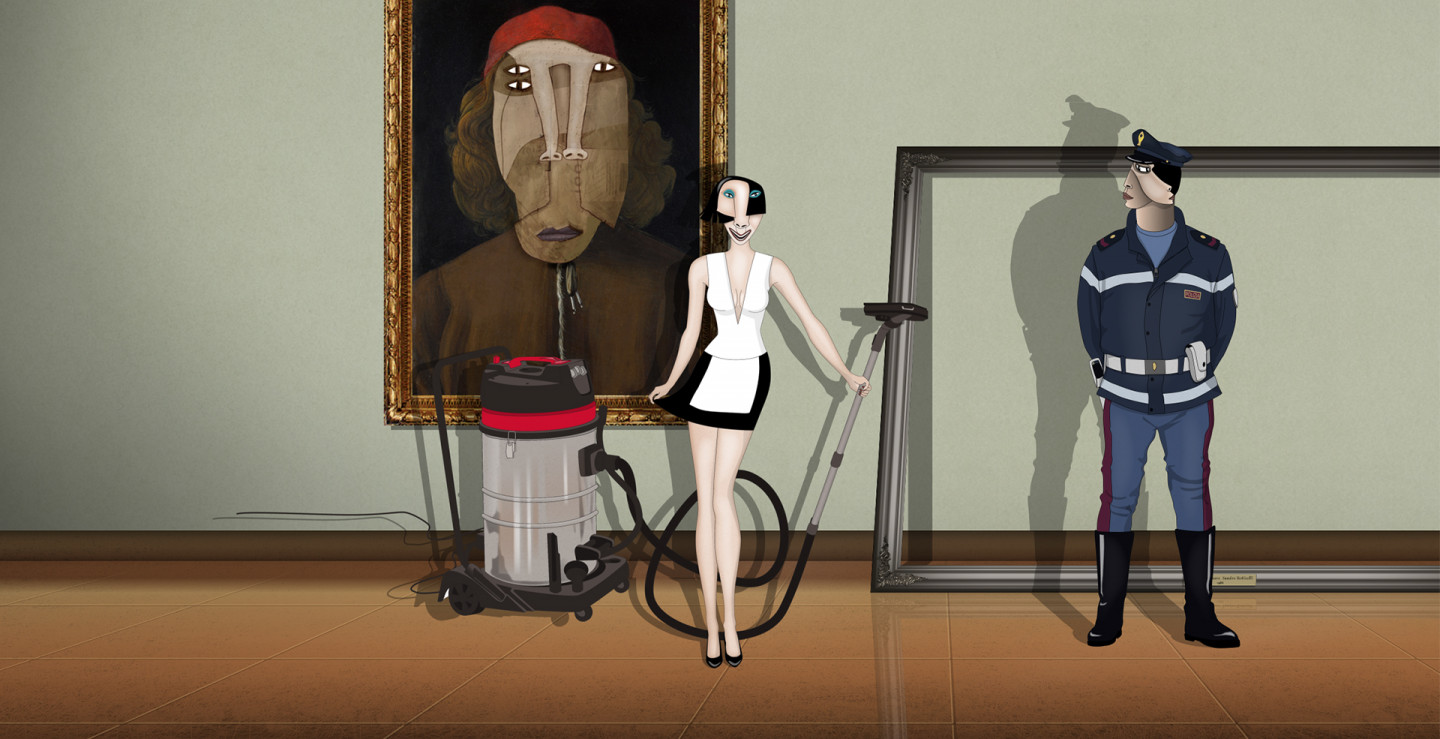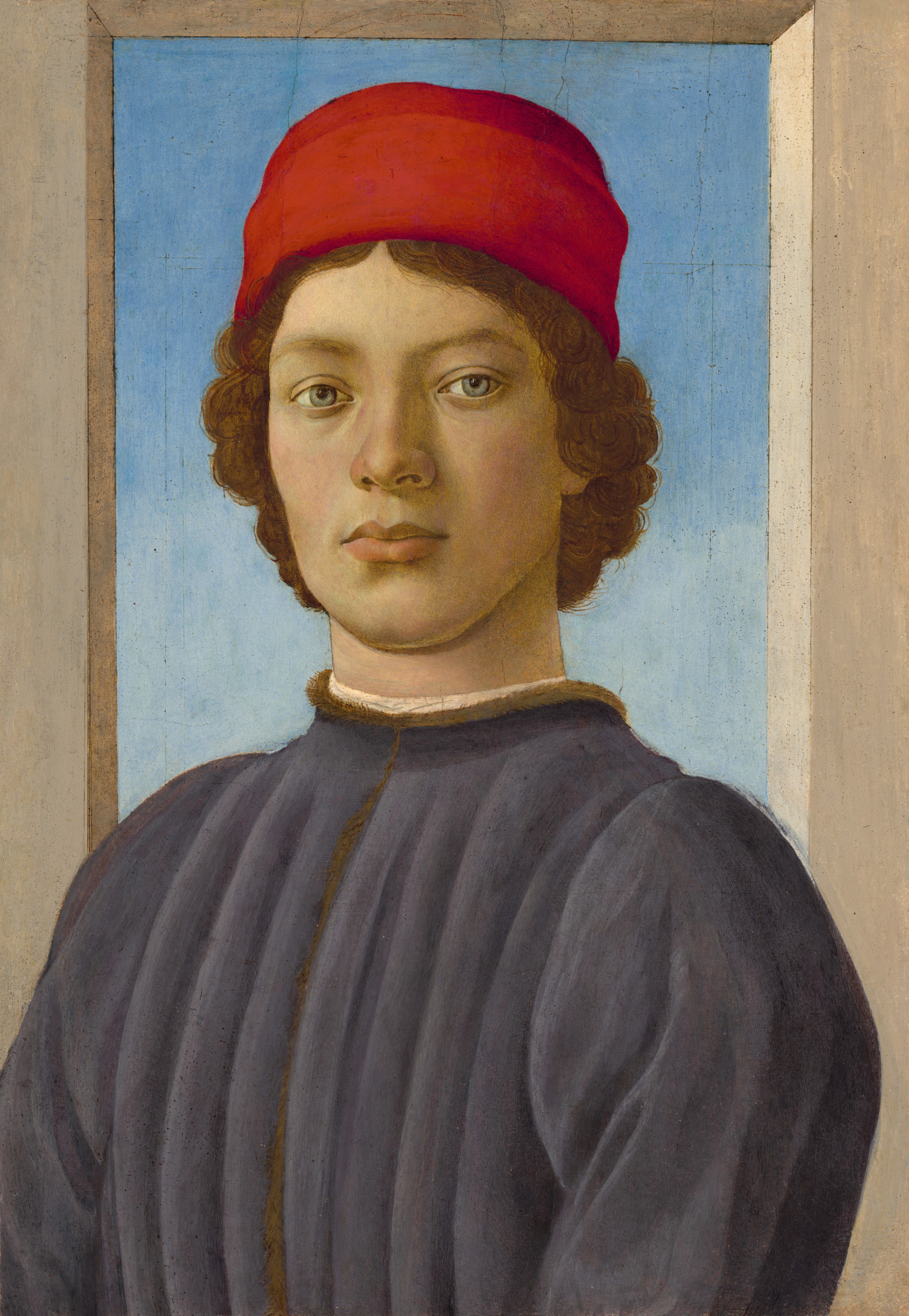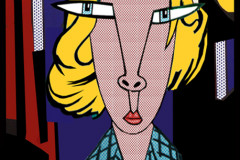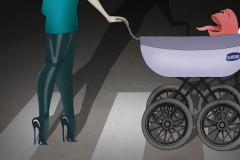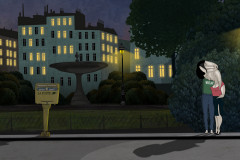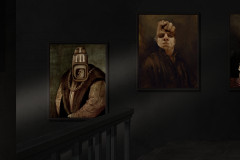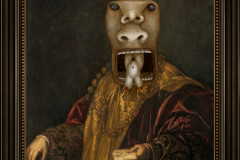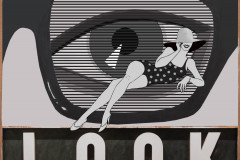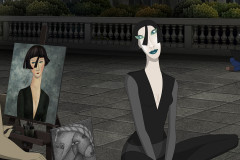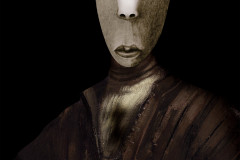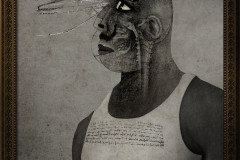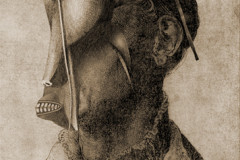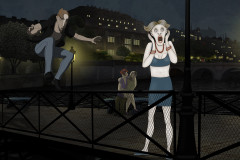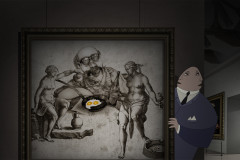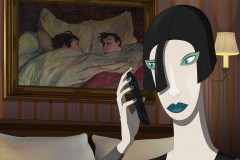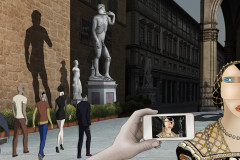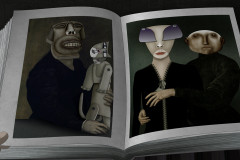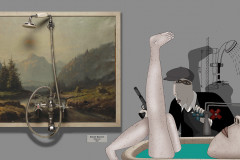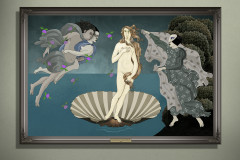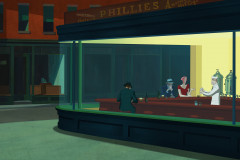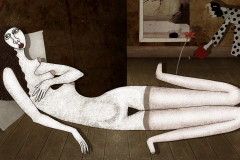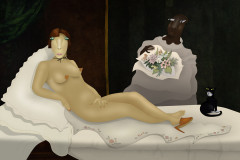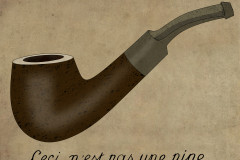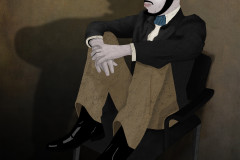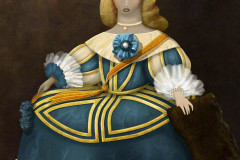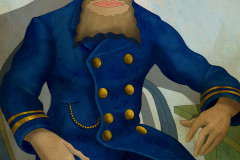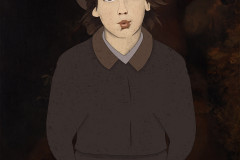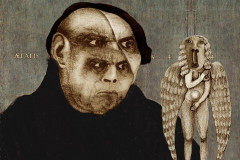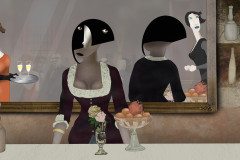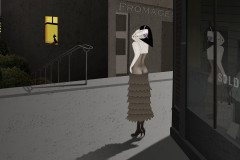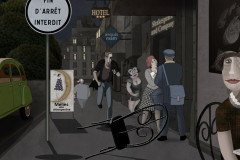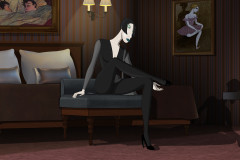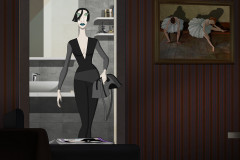Lippi, Filippino (1457 k.-1504): Ifjú képmása, 1485 k. (olaj és tempera, fatábla, 52 x 37 cm), National Gallery of Art, Washington. Az itáliai reneszánsz a portré mint műfaj újrafelfedezésének korszaka is. E kép festője a Boticelli műhelyében tanult firenzei Filippino Lippi, akinek néhány művét – köztük ezt is – a stílushasonlóság miatt nagynevű mesterének tulajdonították. Nem véletlen hát, hogy a valóságban Washingtonban lévő festmény a filmben az Uffizibe, pont Boticelli Vénuszának termébe került.
Akár egy mai érettségi tablóképnek is elmenne ez a portré – semmi nincs rajta, ami a portréalanyról elvonná a figyelmünket, éppen ellenkezőleg: minden eszköz az ismeretlen ifjú alakjának kiemelését szolgálja. A törzsével erőteljesebben, a fejével enyhén elforduló alakot nyugodt, de mégsem teljesen statikus, merev testtartásban ábrázolja a festő. A korabeli előkelő, de nem hivalkodó egyszínű viselet szürkéjét és az ég ragyogóan tiszta világoskékjét ellenpontozza a sapka intenzív pirosa, amely rögtön a fejre irányítja a néző fókuszát. Ezt a kristálytiszta szín- és formavilágot keretezi az alak mögött lévő ablakkeret, amely izgalmas „kép a képben” (és „keret a keretben”) kompozíciót hoz létre, s ismét csak az arc kiemelését szolgálja. S akit látunk, az a fiatalember nagyon is megfelel a reneszánsz ideálnak: nyugodt, de határozott, kevesebb érzés és több intellektus sugárzik képmásáról, kiegyensúlyozottan, magával és a világgal békében néz ránk. Érett, magabiztos „reneszánsz ember”.
Lippi, Filippino (c. 1457–1504): Portrait of a Young Man, c. 1485 (oil and tempera on panel, 52 x 37 cm, National Gallery of Art, Washington). The Italian Renaissance was also a time of rediscovery for the portrait genre. This painting’s artist, Filippino Lippi of Florence, trained in the workshop of Botticelli, and due to stylistic similarities, several of his works—including this one—were once attributed to his more famous master. It’s no surprise, then, that in Ruben Brandt, Collector, the painting appears not in Washington, but in the Uffizi Gallery, placed fittingly in the same room as Botticelli’s Birth of Venus.
This portrait could almost pass for a modern graduation photo—there’s nothing to distract from the subject, and everything in the image works to highlight the figure of the unknown young man. The painter depicts him in a calm but not entirely rigid pose, with the torso turned more strongly than the slightly tilted head. The gray of his elegant but modest outfit, typical of upper-class fashion of the time, and the luminous blue sky behind him are offset by the vivid red of his cap, immediately drawing the viewer’s eye to his face. Framing this crystalline world of color and form is the window frame behind the figure, creating an engaging “painting within a painting” (and “frame within a frame”) composition that further accentuates the head.
The young man we see perfectly embodies the Renaissance ideal: calm yet resolute, with intellect outweighing emotion. His gaze is balanced, at peace with himself and the world—a poised, self-assured “Renaissance man.”






